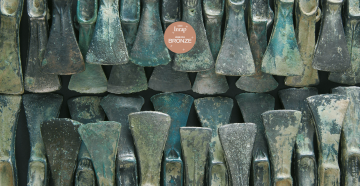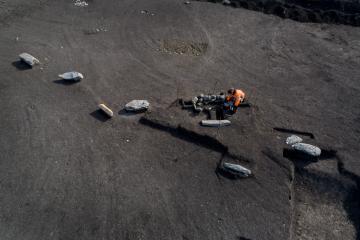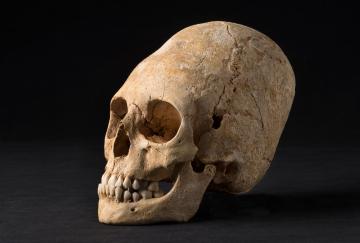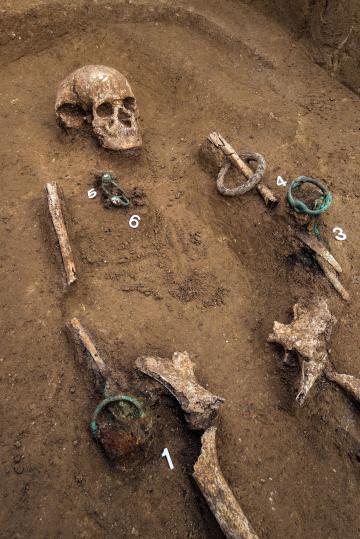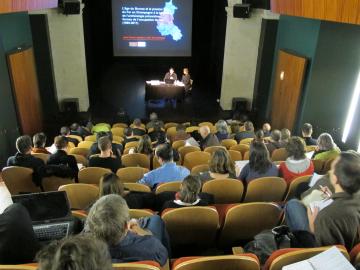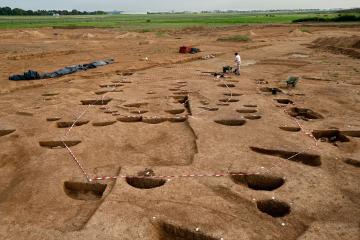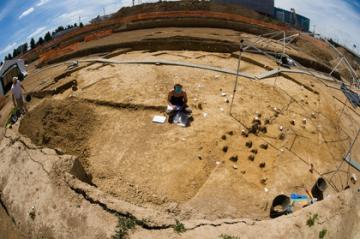You are here
News
- (-) Remove Bronze Age filter Bronze Age
The institut national de recherches archéologiques préventives (national institute for preventive archaeological research) is dedicating its ninth scientific and cultural season to the Bronze Age. Long relegated to an obscure period of Protohistory, it has revealed its true face under the spotlight of preventive archaeology: that of metallurgy, which saw agricultural societies engage in commercial exchanges throughout Europe and access an early form of complex economy. Throughout 2025, Inrap and its partners are getting into the Bronze Age with a rich program of cultural and scientific events.
An Inrap team has recently excavated a group of aligned menhirs at Veyre-Monton (Puy-de-Dôme). This research, prescribed by the State (Drac Auvergne – Rhône- Alpes), was conducted in the context of construction work by the APRR society to widen the A75 motorway. This is the first time such alignments, cairns and statuemenhirs have been discovered in Auvergne or, more broadly, in central France.
In advance of the construction of an industrial business park by the associated communes of Pays de Sainte Odile, Inrap has just finished a large excavation at Obernai, under the curation of the State (DRAC Alsace).
An Inrap team has just uncovered a Gallic necropolis from the 4th and 3rd centuries BC on the site of the Parc Logistique de l’Aube, at Buchères.
In Bayeux, on November 29 and 39, 2011, Inrap organized a round-table on "Settlement and land occupation during the Bronze Age and early Iron Age in France” to present the first results of a national survey devoted to this topic.
An Inrap team is at present excavating, curated by the State (Drac - Regional Archaeological Service, Île de France), an important Gaulish site situated on the territory of the Paris Orly airport. This four-hectare site shows traces of occupation from the late Bronze Age (circa 800 BC) but is particularly interesting in revealing an important farm holding dating from the second century BC.
Gevrey-Chambertin, located 12 km from Dijon, is world famous for its Burgundy wine. Viticulture has been practiced there since the Gallo-Roman period.
A team of prehistorians from the Inrap has discovered traces of some of the last prehistoric hunter-gatherers, in the 15th arrondissement of Paris.The 5,000 m2 excavation, curated by the Regional Archaeology Service (Drac Île-de-France), is located on Henry-Farman Street on the site of a future waste separation centre.


